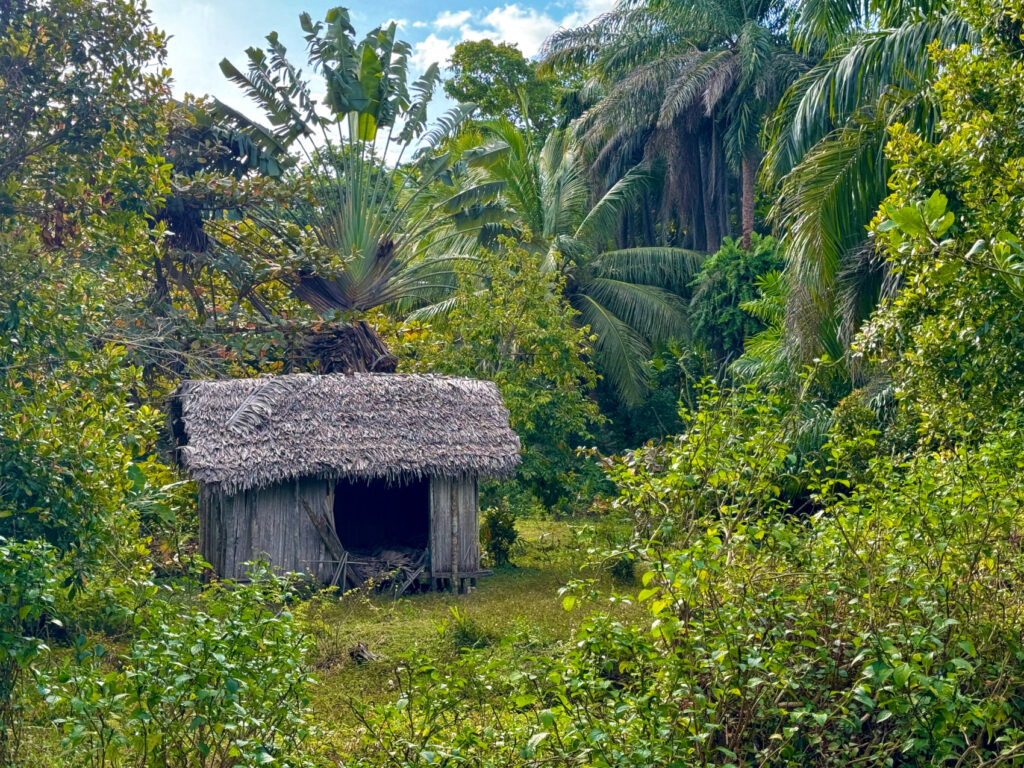
At Ifotatra, as well as learning about local traditions, we also listened to the surrounding sonic environment. The rich world of sound enthralled us from the first moments we spent on the edge of the paradisiacal island of Sainte-Marie.
We were lulled to sleep by the sound of the ocean, which varied according to the time of day and the phase of the moon, accompanied by the steady chirping of crickets. The sounds of nature rang out loud and clear, undisturbed by human intervention in the soundscape. The countryside was falling asleep, no cars could be heard. Only the conversations of our group, carried on late into the night, stood out from the nocturnal landscape. Every few hours, the steady hum of the ocean was joined by the sound of rain, which appeared and disappeared unexpectedly regardless of the weather forecast. It was accompanied by a strong wind, swaying the palm leaves stretching high and even knocking over impressive plants whose roots were disturbed by the tides.
One night, around one o’clock, we even heard the sounds of whales coming surprisingly close to shore. We immediately ran out with our recorders to record this unique event. Unfortunately, we were late, but undaunted, we decided to leave our equipment in the hope of seeing them again.
Around 5am the sound world was getting crowded. The day began with the soft calls of the birds, which became more insistent with each passing moment; until finally they were interrupted by the raucous crowing of the rooster, waking all the residents. The people, attuned to the rhythm of sunrise and sunset, began their work with the first rays.
During the day we explored the island and looked for opportunities to record the soundscapes around us. One of these was a waterfall, hidden between the trees in the tropical jungle. Its steady hum was disturbed by nothing but our presence and the chirping of birds.
On our walk through the village, we instead discovered a wealth of household sounds. One hut offered coffee and a battery-operated radio was set up in front of the ‘café’, broadcasting loud Malagasy popular music. We could hear the laughter of the children and the popping of the balloons we played with them. We were surrounded by animals – the quacking of ducks and the clucking of geese, the clucking of hens, the occasional barking of a dog. The litter of dry sticks crunched underfoot, punctuated from time to time by the sharp sounds of a plastic bottle being stepped on. We joined in creating the sounds of the place by playing the ukulele and singing, which allowed us to form deeper connections with the villagers. They listened to our playing with curiosity and amusement, and we were surrounded by a garland of children on the beach. Despite everything, a sense of calm was palpable in the village, and after walking just a few steps, the sounds faded away.
During our trip, we often joke that in Madagascar, especially on the island of Sainte-Marie, time runs its own course and even being an hour late is not unusual. One day, not far from the village, we were waiting for the increasingly delayed tuk tuks. Suddenly, from behind a fence and a clump of trees came the joyful singing of a young girl. She was bustling around the house with a dancing step, most likely doing her daily chores. The music was accompanied by the typical sounds of animals in the village – ducks, chickens and roosters – as well as the footsteps of the strolling residents and the peaceful sound of the ocean.
Recordings – Łukasz Smoluch, Joanna Kwapień, Marcel Frąckowiak
